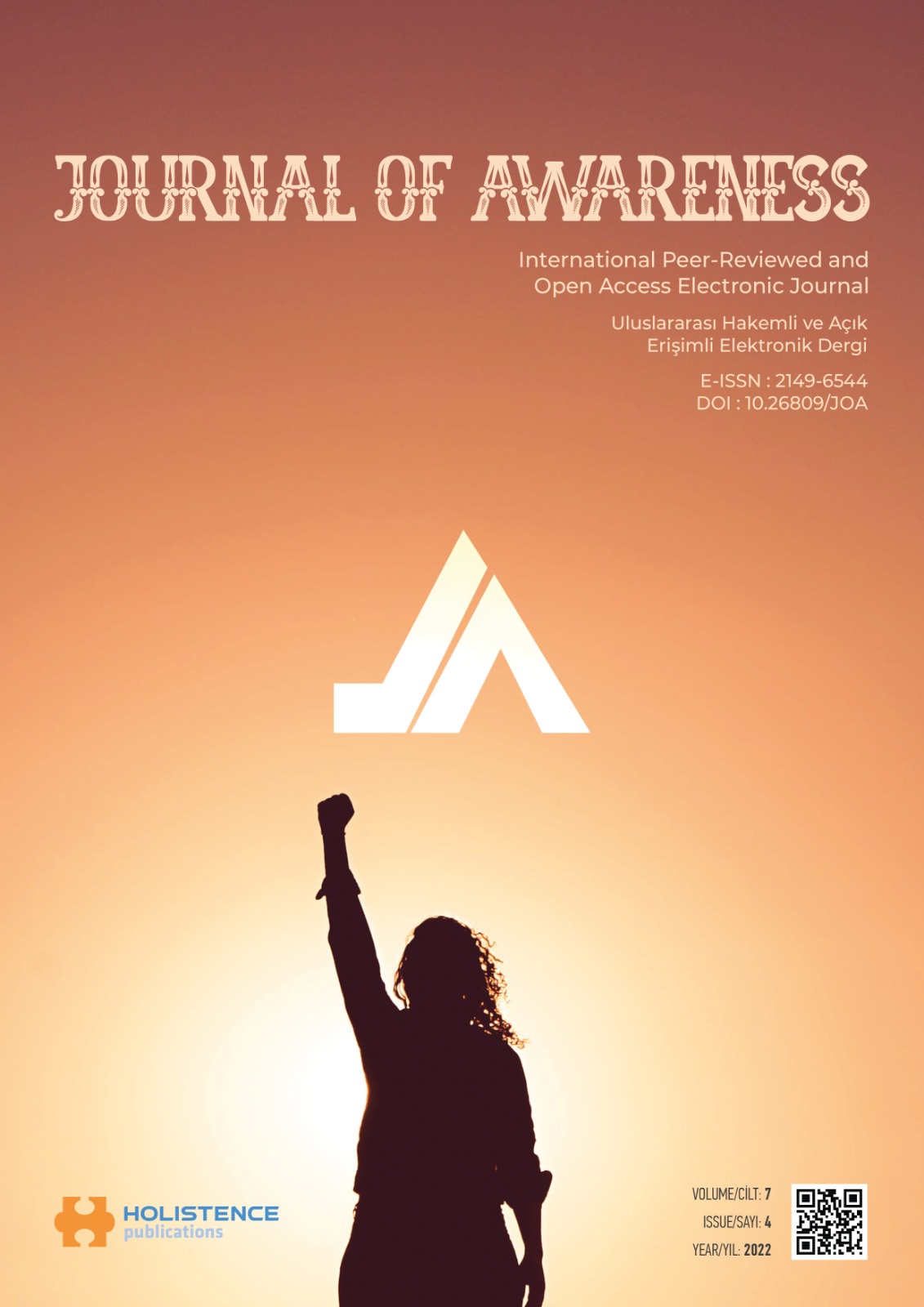Investigation on Functıonality and Conceptability in Ceramic Forms: Melanie Brown
DOI:
https://doi.org/10.26809/joa.7.4.05Keywords:
Ceramic , Conceptual , Function , Form, ArtAbstract
Ceramic is one of the oldest branches of art. The archaeological finds show that the first ceramic pieces were produced to meet basic needs. It is presented with a form based on the function of ceramic pots, which will perform the functions such as storage and cooking. Today, ceramic is a material that is frequently encountered in functional pottery, sanitary ware and tile production and also used as an artistic material. The use of ceramics as a material that has been formed through its function for millennia and which has come to the present day in the field of conceptual art coincides with a very recent time in its historical process. Melanie Brown, an artist who has produced concepts through functional and traditional ceramic forms as well as the use of ceramics as a material in the field of conceptual art, is the main subject of this study. Although the teapots she shaped on her lathe in his studio in Monmouthshire since 1978 seems like ordinary teapots at first glance, she examined the concept of family with her forms, persons within the group that preserved their individuality and suggested
that fire changed the material. In short, Brown’s teapots have become more than statues, which are fine, elegant, well-designed, and can be brewed with delicious tea. The function tends to follow rather than use the viewer form as if it were located at a lower position than the concept.
In this context, this paper, which is a compilation study in the light of face-to-face interviews with the artist and
articles written about herself, seeks to answer the question of whether the ceramic material is frequently found in
itself.
Downloads
References
ACARTÜRK, B. (2012, Ocak ). Toprağın Binlerce Yıllık Macerası. ACTA TURCICA Çevrimiçi Tematik Türkoloji Dergisi(Sayı 1: “Kültürümüzde Toprak”), 1-1.
BAYAZIT, N. (1997). ‘İşlevselcilik’ Eczacıbaşı Sanat Ansiklopedisi (Cilt 2). İstanbul: YEM Yayın.
BERGER, J. (1986). Görme Biçimleri,. (Y. Salman, Çev.) İstanbul: Metis Yayınları.
BROWN, M. (2019, 06 09). Eskizler. (T. Batu, Röportaj Yapan)
BROWN, M. (2022). Melanie Brown Porcelain. Melanie Brown Porcelain: http://www..com/melpotsruthin005_ 1.jpg adresinden alındı
ER, A. C. (2015). Seramik Çaydanlık Formunun Kişisel Çalışmalar Üzerinden Değerlendirilmesi. Yedi: Sanat, Tasarim Ve Bilim Dergisi(13), 51-57.
FISCHER, E. (2012). Sanatın Gerekliliği. (C. Çapan, Çev.) İstanbul: Sözcükler Yayınları.
GOMBRICH, E. (1992). Sanatın Öyküsü (4 b.). İstanbul: Remzi Kitabevi Yayınları.
HANÇERLİOĞLU, O. (1996). Felsefe Sözlüğü. İstanbul: Remzi Kitabevi.
İPŞIROĞLU, Ş., & EYÜBOĞLU, S. (2013). Avrupa Resminde Gerçek Duygusu. İstanbul: Hayalperest Yayınevi.
JUDITH, A. (2020). Doğulu Beden Batılı Zihin. (E. P. Fındıkçıoğlu, Çev.) İstanbul: Pingala Yayınevi.
KÜTÜK, N. (2016). Türk Sanatları ‘Seramik’. İstanbul: İstanbul Büyükşehir Belediyesi Kültür A.Ş. Yayınları.
MASSON, V. M. (1957). “Djeytun İ Kara-Depe”. Sovetskaia Arheologia,(1).
ORAL, E. (2020). Anadolu Neolitik Dönem Boyalı Seramiği. Academic Social Resources Journal, 5(13), 95-100.
ÖNAL, N. O., & ULUDAĞ, K. (2019). Sanayi Devrimi Öncesi Seramik Sanatı Tarihi. Ankara: Gece Akademi.
ÖNER, S. (2016, 3 4). Hem Sanat Hem Değil: “Çeşme” . Vesaire: https://vesaire.org/hem-sanat-hem-degilcesme/
adresinden alındı
ÖNLÜ, N. (2010). Tararımda Yaratıcılık ve İşlevsellik: Tekstil Tasarımındaki Konumu. Atatürk Üniversitesi Sosyal Bilimler Enstitüsü Dergisi.
ÖTGÜN, C. (2008). Sanat yapıtına yaklaşım biçimleri. Gazi Üniversitesi Sanat ve Tasarım Dergisi, 2, 159-178.
ROTHKO, M. (. (2020). Sanatçının Gerçekliği Sanat Felsefesi,. (E. B. Alpay, Çev.) İstanbul: Hayalperest Yayınevi. Sanatatak. (2018, Aralık 7). Sanatatak. 1 2022 tarihinde Sanat ve hayat hakkında çok şey: http://www.sanatatak. com/view/alev-ebuzziya-6-yil-aradan-sonra-yeniden- istanbulda adresinden alındı Türk Dil Kurumu Sözlükleri. (2021, 11 3). 11 3, 2021 tarihinde Sözlük: https://sozluk.gov.tr/ adresinden alındı
ÜNAL, S. (2021). Estetik-Sanat-Zanaat Yaklaşımıyla Seramik Sanatı Üzerine Düşünceler. İstanbul Aydın Üniversitesi Sosyal Bilimler Dergisi, 195-224.
YETİŞKEN, H. (2012). Aristoteles’te Sanatın Neliği ve İşlevi. Bursa Uludağ Üniversitesi Fen-Edebiyat Fakültesi Felsefe Dergisi, 27-35.
YILMAZ, S., & GÖKBEL, F. M. (2020, Aralık). Seramik Pişirme, Yeme-İçme ve Saklama Kaplarının Ergonomik Gelişim Süreci. Ulakbilge(55), 1516-1530. doi:10.7816/ulakbilge-08-55-05
Downloads
Published
How to Cite
Issue
Section
License
Copyright (c) 2022 Holistence Publications

This work is licensed under a Creative Commons Attribution 4.0 International License.
When the article is accepted for publication in the Journal of Awareness, authors transfer all copyright in the article to the Rating Academy Ar-Ge Yazılım Yayıncılık Eğitim Danışmanlık ve Organizasyon Ticaret Ltd. Şti.The authors reserve all proprietary right other than copyright, such as patent rights.
Everyone who is listed as an author in this article should have made a substantial, direct, intellectual contribution to the work and should take public responsibility for it.
This paper contains works that have not previously published or not under consideration for publication in other journals.










